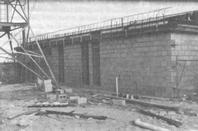


Radio Technical Officers
Foreword
Acknowledgements
Preface
Introduction
Chapter 1: The Early Years
Chapter 2: The Training School
Chapter 3: Equipment Installation Records
Chapter 4: The 'Techs' in Antarctica
Chapter 5: The 'Techs' Tell Their Stories
Trevor Donald Tells It All; Life in the Bureau from 1947 to 1989
Ray Clarke Looks Back
Some Memories from Ralph Bulloch
Peter Copland Works in Meteorological Electronics
Some Titbits from Dave Grainger
A Very Modest Tale from Alf Svensson
Adrian Porter Pulls No Punches
Jack Tait Recalls
Some Stories by Colourful Freddie Soutter
Some Snippets from Noel Barrett
Stephen CourbÍt Has His Penny Wworth
And a Flyspeck or Two from Lenny Dawson
Some Interesting Reminiscences from Jannes Keuken
Brief Stories from Phil Black
From Gloria West, Wife of the Late Bob West
The Life and Bureau Times of Graham Linnett
Tales Out of School from Bill Hite
Peter Copland on Cyclone Tracy
Peter Broughton Tells the Story of Maralinga
Appendix 1: 'Techs' Roll Call
Appendix 2: Trainee Intakes
Appendix 3: 'Techs' Who Have Served in the Antarctic Region
Appendix 4: Summary of Major Installation Projects
Appendix 5: Summary of Major Equipment Variously Installed at Sites and Maintained by Radio Technical Officers
Index
Search
Help
Contact us

Peter Copland on Cyclone Tracy (continued)
Jack Byrne came back for a short time, but it was not too happy a time for him. With his home and all the family's possessions wiped out, his family could not have returned for at least six or more likely 12 months until they had somewhere to live. They had already spent at least five years in the Northern Territory with Jack bashing his head against a brick wall a lot of the time, especially over staff, or the lack of it. His transfer to Adelaide would, I think, have been very attractive.Things were starting to be rebuilt around Darwin. New roofs on the major buildings, including the MLC. There were teams working throughout the town on the power and water systems. Other teams were replacing the roofs on private (repairable) houses, usually a bit rough but waterproof. Made a lot more houses habitable again.
There were some problems when repairing our buildings though. One instance was in the endeavour to get the airport Dines anemograph operating again. The powers that be had decreed that the original guy anchors were not strong (thick) enough, and could be cut by flying tin in another cyclone. This was, of course, quite ridiculous; firstly they had not been damaged in Tracy, secondly it is not possible for a piece of tin to obtain that amount of energy at ground level, and lastly, if it did, who the hell would be around to care. But, it put back the airport Dines by at least three months.
We could not use the former IPS building at Emery Point 'til major tie down works were completed; they could have been fixed before the next wet season. Later the indestructible Dines anemograph was built 70 metres north of the radar building. It was a concrete block house made from 30 cubic metres of concrete with about half of that underground, and a ton of reinforcing steel to hold it all together. It was topped with a welded steel tower, so no cables. However, there is no way to protect the head assembly. There was another small problem for awhile; water ran straight through the walls and the hut was as wet inside as out.
Then came the indestructible radar building, to happily withstand 270 km/hr winds if I remember correctly. This was achieved by entombing the entire building in a new concrete structure marginally larger than the old building, with a 20 centimetre thick poured concrete roof. Cyclone survival was the only thing to matter. The fact that the entire building, having only a door at each end and no windows, was a perfect fire trap was of no importance. On pointing out this problem one idiot architect replied "no problem, push out the air-conditioners and climb through the hole from the inside". Eventually some light filtered through the intellectual cobwebs and it was decided to remove the old building from within. This must have been about the worst job imaginable; removing an iron roof half a metre below a hot steel J concrete roof with hardly any ventilation. I hope the guys were well paid.

 |
Bureau of Meteorology |  |
© Online Edition Australian Science and Technology Heritage Centre and Bureau of Meteorology 2001
Published by Australian Science and Technology Heritage Centre, using the Web Academic Resource Publisher
http://www.austehc.unimelb.edu.au/fam/1278.html